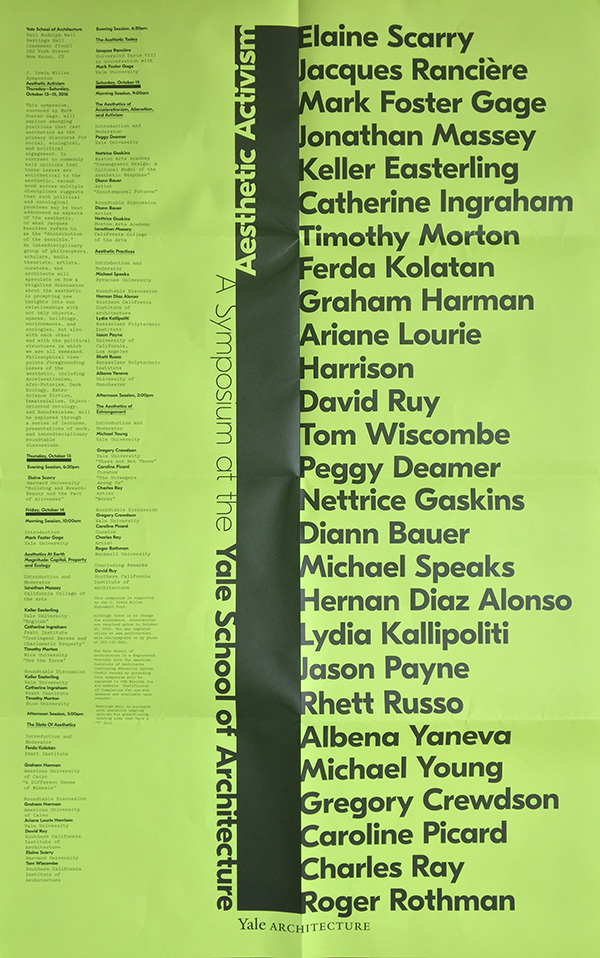I figured the words “Yale”, “Aesthetic”, “Activism” and “Free” would add up to a worthwhile and day trip to New Haven. It did not disappoint.
“Aesthetic Activism” was the title of this year’s J. Irwin Miller Symposium hosted by the Yale School of Architecture. The word aesthetic, here, is central as it has been highly contested as to whether or not this quality can exist in its purest form within social, ecological and political engagement. Beyond relationships with objects, the event’s flyer drew me in by attributing aesthetics as key factor in our relationships “with each other and with the political structures which we are all enmeshed.”
Unfortunately, I had missed Elaine Scarry’s lecture “Building and Breath: Beauty and the Pact of Aliveness,” but Elaine joined in on Friday’s roundtable discussion about the “Aesthetics of Equality” with the philosopher Graham Harman, and the architects Ariane Lourie Harrison, David Ruy and Tom Wiscombe. The roundtable was preceded by Dr. Harman’s talk, “A Different Sense of Mimesis,” where he discussed his Object-Oriented Ontology and distinguished “sensual objects” (those we can register) from “real objects” (those that are withdrawn from us). The difference, Harman said, is thought of as “a wedge that is driven between objects and qualities.” In my view, Scarry’s presentation most directly addressed “aesthetic activism,” encapsulating in the observation that “in the presence of beauty, your preoccupation ends”.
French philosopher, Jacques Rancière and Yale professor Mark Foster Gage engaged in a conversation during the evening session. Rancière brought the day’s considerations full circle regarding the conference’s theme with his statements on equality emerging from the design process. “Architecture should assert equality,” he said.
For those of you who could not attend the symposium, I leave you to ponder some of Rancière’s thoughts regarding aesthetic activism…
…It is the redistribution of the sensible.
…It is the political action of the misuse of space and action.
…In architecture, it is a way of clearing the streets (vs. creating a blockade).
…It is about porosity, creating openings in which to view problems.
…It has to do with the poetics of knowledge—therefore it is about education.
Cheers!
—Diana Duque, MA Design Studies Class of 2018

